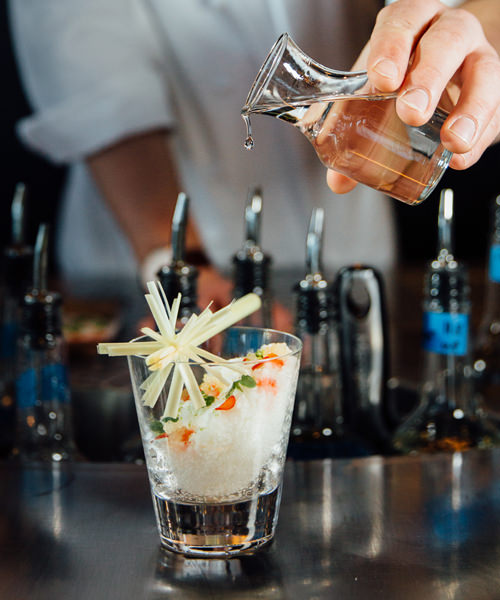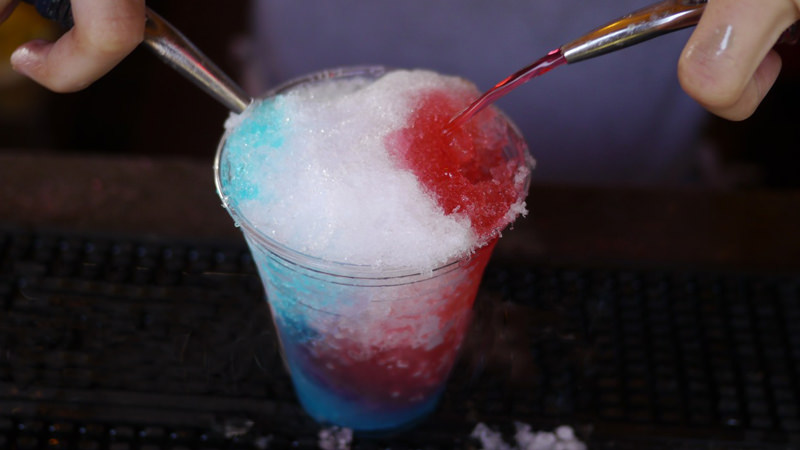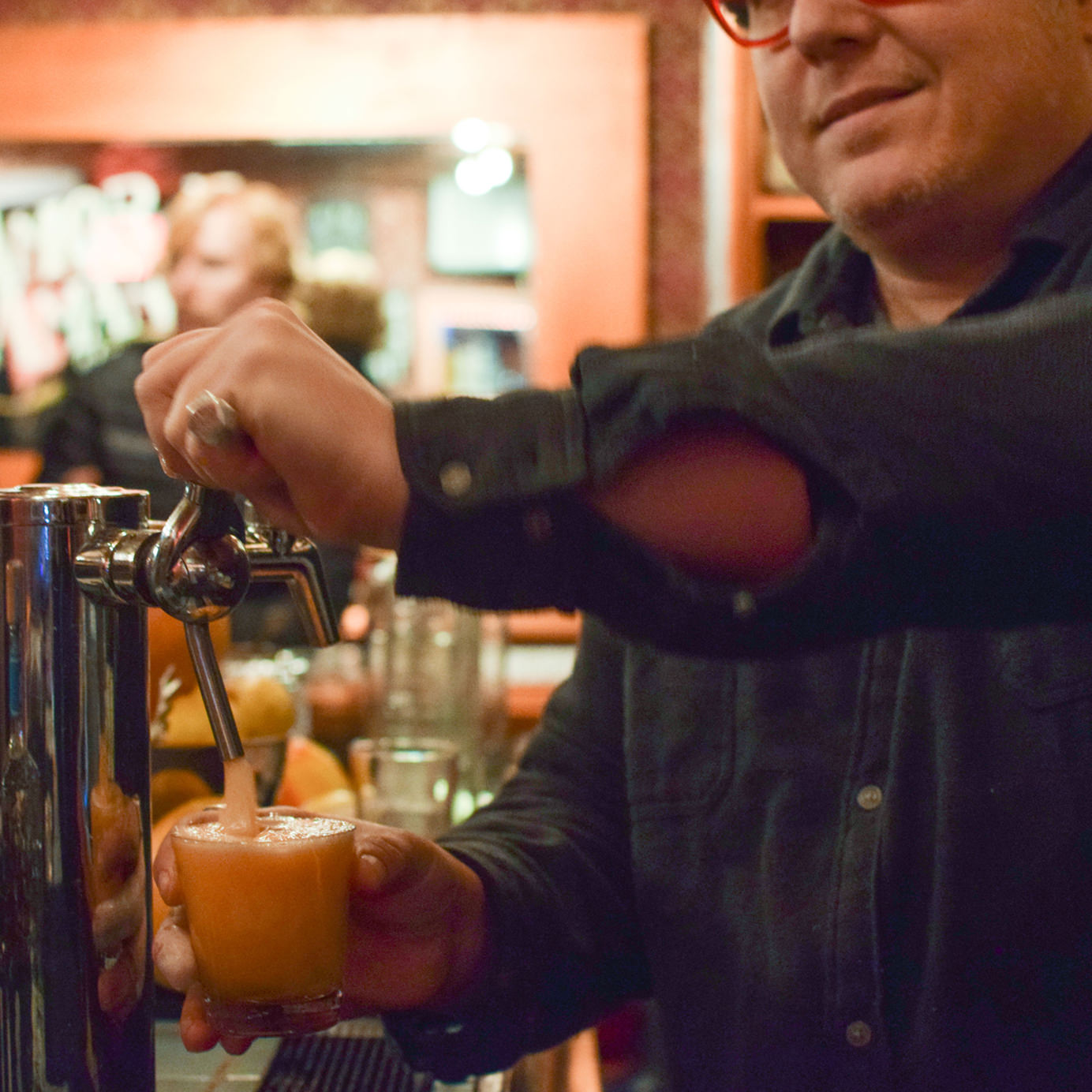
Remember when foam was a thing? In the early aughts, molecular gastronomy catapulted fine dining into the 21st century. Launching from Ferran Adria’s groundbreaking elBulli, the movement brought liquid nitrogen, hydrocolloids, and sous-vide everything into innovative kitchens around the world.
Now, progressive bars are utilizing innovative gadgets and scientific technique to produce show-stopping, category-redefining drinks. In today’s elevated cocktail culture, it isn’t always enough to simply serve good booze. Tech-savvy beverage professionals are infusing spirits sous-vide, seasoning cocktails with powdered acids, and producing beautifully balanced drinks on draft. Many of their techniques borrow and build on the culinary inclinations of forward-thinking restaurant kitchens.
Micah Melton heads up Grant Achatz’s The Aviary in New York City. His detailed, precise cocktails reflect the three Michelin-starred cooking of The Aviary’s Chicago sibling, Alinea. Melton’s How Does Snoop Dogg Use Lemongrass? cocktail blends liquid nitrogen with ginger juice to produce a snow that stands in for ice, and contributes a fresh, spicy kick to the drink. (The answer is “swizzle,” by the way.) It is served tableside in a rocks glass filled with snow and herbs, and finished with vodka and, of course, a lemongrass swizzle stick.
“At the table the guest pours a sidecar of vodka over the snow, and swizzles the drink together using a frayed stalk of lemongrass,” Melton explains.

In Toronto, aptly named BarChef adopts a similarly ingredients-centric approach to culinary cocktail science. Owner Frankie Solarik thinks of his drinks as “an artistic expression, not just an opportunity to use a technique for the sake of using a technique.”
“A lot of people have these fancy tools like rotary evaporators, immersion circulators, centrifuges, etc.,” Solarik says, “but we first look at what we are trying to accomplish. If a dish requires one of those techniques, we’ll use it.”
Since opening in 2008, BarChef’s cocktail list has increasingly relied on culinary methodology, moving Solarik from his original place behind the bar into the kitchen. He and a team of chefs execute meticulously prepared dishes that occupy a space in between edible and drinkable. The menu is divided into several sections, including one titled Modernist Cocktails; there, the intention is to give guests “an immersive, memorable, nostalgic, and emotional drinking experience,” Solarik says. Those drinks use the freshest produce possible alongside primarily house-made ingredients and top-shelf spirits.
One of BarChef’s best-known cocktails is the Vanilla and Hickory Smoked Manhattan. The drink is presented under a strikingly large glass cloche filled with thick clouds of hickory smoke, made by lighting hickory wood and a vanilla pod with a blowtorch. This process happens so frequently every night that the bar has developed an aromatic patina of sorts.
https://www.instagram.com/p/BaNW6NYjY04/?taken-by=barcheftoronto
Cocktail culture has already experienced a period of recreating and riffing on classic cocktails. BarChef’s Smoked Manhattan illustrates how technology can now further that tradition and share new artistic visions.
Other bar professionals are using technology to accomplish previously impossible feats of volume and scale. Harvard & Stone in Los Angeles refuses to compromise quality of cocktails even amidst droves of drinkers. Every April, bar manager Aaron Polsky hauls his program to the Coachella Music and Arts Festival, where attendees gulp down over 10,000 craft cocktails in a single weekend.
“Our work at Coachella allows us to test cocktails on large numbers of people, including techniques and flavors,” Polsky says. Successful drinks are then tweaked further behind Harvard’s main bar, and those that make the cut may end up on the menu in L.A.
To accomplish this massive undertaking, Polsky removes fresh citrus from cocktail specs. Instead, he uses “custom-blended citrus flavors in addition to powdered citric, malic, and succinic acids.” (These are the types of acids naturally found in fresh lemons and limes.) The blends are incorporated into draft cocktails, served as long drinks and alcoholic shaved ices.
Without fresh citrus, the bases have a much lower water content and thicker viscosity, thus “the drinks stick to the ice and have both wonderful texture and intense flavor,” Polsky says. Naturally, at Coachella, each one is doused with food-grade glitter before it’s served.
At New York’s Amor y Amargo, beverage director Sother Teague’s cocktail program has strictly written off fresh citrus juice of any kind in favor of spirit- (and bitters-) forward libations. This results in a drastic decrease in spoilage, and the ability to offer a rotating roster of pre-mixed beverages on tap. The list often features classic Americanos and Negronis.

A few miles east, in Montauk on Long Island, Adam Miller of Flagship Montauk removes fresh citrus from his draft selections and loads up on lemon and lime in the otherwise tiki-influenced menu (picture lots of rum and occasional paper parasols). “Stirred cocktails are tricky with dilution and temperature,” Miller says, “so pre-diluting and storing at preferred serving temperature is an amazing benefit to putting a cocktail on draft. It’s a great way to serve guests their drinks quickly and accurately down to the milliliter.”
Flagship’s final draft cocktail last summer was called the Kiwi Herman. It included green tea, Suze liqueur, Bobby’s Schiedam Dry Gin, New Zealand Sauvignon Blanc and crème de pêche, all mixed up and seasoned with a bit of citric and malic acids before being cooled and kegged for service.
Also on premises is its Research & Development Bar that gives Harvard the opportunity to host guest bartenders, experiment, and exchange ideas. The team “just got a hold of a Spinzall centrifuge that enables continuous liquid clarification; we’re still exploring all the possibilities of it,” Polsky says.
Perhaps most admirably for a high-volume rock and roll bar, the menu always lists thoughtful non-alcoholic options, often showcasing tasty booze-less spirits from Seedlip, and accented by house-made, glycerin-based vermouths and amari. Glycerin “extracts flavor in a very similar way to alcohol and also lends stability to the solution that wouldn’t otherwise be possible with just water,” Polsky explains.
“When we use tech at Harvard, we don’t necessarily use it as a selling point with guests,” Polsky says. “Sometimes you can blow stuff up for show, and it’s awesome, but generally it’s just to make the drink better.” Progress is a process, whether it’s scientific or artistic — or both.
Cover image courtesy of Amor y Amargo.
